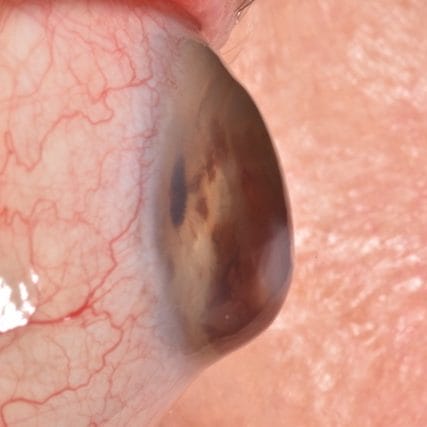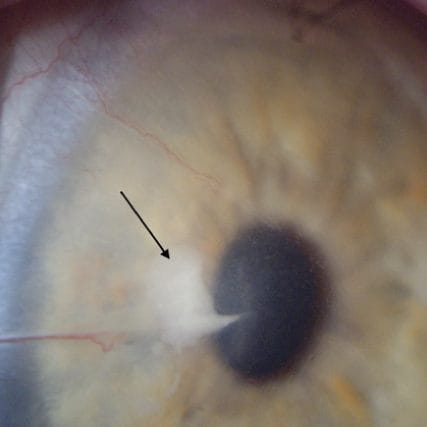7800 SW 87 AVE SUITE B-270 MIAMI, FLORIDA 33173
Contact Us
- Home
- Color Blindness
Color Blindness
Understanding Color Blindness
Color blindness, or as it’s medically known, color vision deficiency, is a condition that impedes the ability to see and differentiate colors accurately. Often mistaken as a mild inconvenience, color blindness affects approximately 1 in 12 men (8%) and 1 in 200 women globally, altering their perception of the world. While this condition is mostly genetic, color blindness can also emerge as a result of trauma, disease, or chemical damage to the eye, the optic nerve, or even specific areas of the brain that are integral for processing color information.
The most common form of color blindness is red-green deficiency. Those with this type often struggle to distinguish between these two colors, making certain tasks more challenging. Yet, color blindness isn’t just a binary issue—it presents itself along a spectrum, with some individuals experiencing more severe symptoms than others.
What Causes Color Blindness?
Color blindness is primarily a genetic condition, handed down from parents to their offspring. It significantly affects about 10% of the male population, with the most common form of the condition being red-green color deficiency. This genetic predisposition impacts the light-sensitive cells in the retina, resulting in a disrupted color processing mechanism.
However, it’s not only genetics that play a part in the onset of color blindness. This condition can also be triggered by damage to the eye, optic nerve, or specific parts of the brain responsible for processing color information. Trauma, disease, or chemical damage can all contribute to the development of color blindness. Thus, color blindness is a multifactorial condition, entwining both genetics and environmental triggers.
Given its complexity, it’s crucial that color blindness receives a proper diagnosis and effective treatment, which brings us to the innovative approach undertaken by Dr. Edward Boshnick in his eye care practice.
Symptoms and Impact of Color Blindness
Symptoms of color blindness vary among individuals, but a common sign is difficulty discerning different shades of colors. A person with normal color vision would have no trouble distinguishing variations in hues of blue, pink, or green. However, someone with red-green color deficiency may find this task troublesome. Although they can identify primary colors, they may perceive a pair of gray pants as blue, or struggle to distinguish between different shades of green.
Color blindness can have far-reaching effects on daily life, influencing everything from food choices to driving, learning, and career opportunities. It can affect a person’s ability to complete tasks that others take for granted. As such, effective diagnosis and treatment of color blindness are paramount to enhancing the quality of life for those affected.
Diagnosing Color Blindness
Diagnosing color blindness requires a comprehensive ocular health and vision examination. This process often includes color vision screening tests designed to highlight the areas of color perception where the individual struggles. One common test involves identifying numbers within a circle filled with dots of different colors. Depending on the colors the person can or cannot see, the examiner can determine the type and severity of color blindness.
Diagnosis isn’t solely about assigning a label—it’s a crucial step that shapes the subsequent treatment plan. By understanding the nature of an individual’s color blindness, medical professionals can devise the most effective strategy for managing the condition.
How do you treat color blindness
In the realm of color blindness treatment, Dr. Edward Boshnick is a pioneer. He utilizes a groundbreaking approach that combines his extensive experience in optometry with the cutting-edge technology of Color Enhanced Soft Lenses. These specialty scleral lenses are tinted with varying shades and colors, aiming to restore quality color vision to those affected by color blindness.
These lenses aren’t standard—they’re transformative. By subtly adjusting the light entering your eye, Color Enhanced Soft Lenses enable individuals to perceive a broader spectrum of colors and shades. This broadened perception can redefine everyday experiences, from appreciating a sunset to choosing matching clothes.
However, a crucial step precedes the fitting of these lenses: a thorough ocular health and vision examination conducted by Dr. Boshnick. This examination ensures that the Color Enhanced Soft Lenses will perfectly address each patient’s specific needs.
Dr. Boshnick’s approach to treating color blindness has demonstrated incredible success. Every patient who had previously failed color vision screening tests for employment or job advancement passed these tests when using the specialty color-enhancing lenses designed by Dr. Boshnick. For many, these lenses have been life-changing, transforming a monochrome world into one bursting with color.
Life with Enhanced Color Perception
Color Enhanced Soft Lenses offer more than color correction—they provide a newfound perspective. Imagine seeing a painting in a gallery and appreciating the full range of colors for the first time, or looking at a traffic light and distinguishing red from green without hesitation. This technology is more than an optical innovation; it’s a tool for inclusion, enabling those with color blindness to experience the world in a way they never thought possible.
In conclusion, color blindness, while a significant condition, can be managed effectively with the right treatment. Dr. Edward Boshnick’s expertise and the technological prowess of Color Enhanced Soft Lenses have brought color back into the lives of many individuals. With this comprehensive approach, a vibrant, colorful world is within reach for those affected by color blindness.
Your Vision, Our Priority:
Schedule Your Consultation Now
Frequently Asked Questions
While there is no cure for genetic color blindness, solutions like the Color Enhanced Soft Lenses provided by Dr. Boshnick can significantly improve color perception.
These lenses are tinted with specific shades and colors designed to improve color vision. They enhance the wearer’s ability to distinguish and recognize different colors.
Prior to fitting patients with these lenses, a comprehensive ocular health and vision examination is performed. This ensures that the lenses are tailored to the individual’s specific needs and visual conditions.
The success rate is significant. All patients in Dr. Boshnick’s practice, who had difficulty passing color vision screening tests for employment or job advancement, have passed these tests after using the color-enhancing lenses.
Yes, children can also benefit from these lenses. It’s important to have a comprehensive eye exam with a specialist like Dr. Boshnick to ensure the best fit and correct prescription.
Absolutely. These lenses are designed to provide comfort to the wearer. However, as with any corrective lens, there may be an initial adjustment period.
Typically, these lenses are safe to wear throughout your waking hours. However, the specific length of wear should be determined by Dr. Boshnick based on your individual eye health.
Schedule Your Consultation with
Dr. Boshnick
-
-
-
7800 Sw 87 Ave Suite B-270
Miami, Florida 33173




